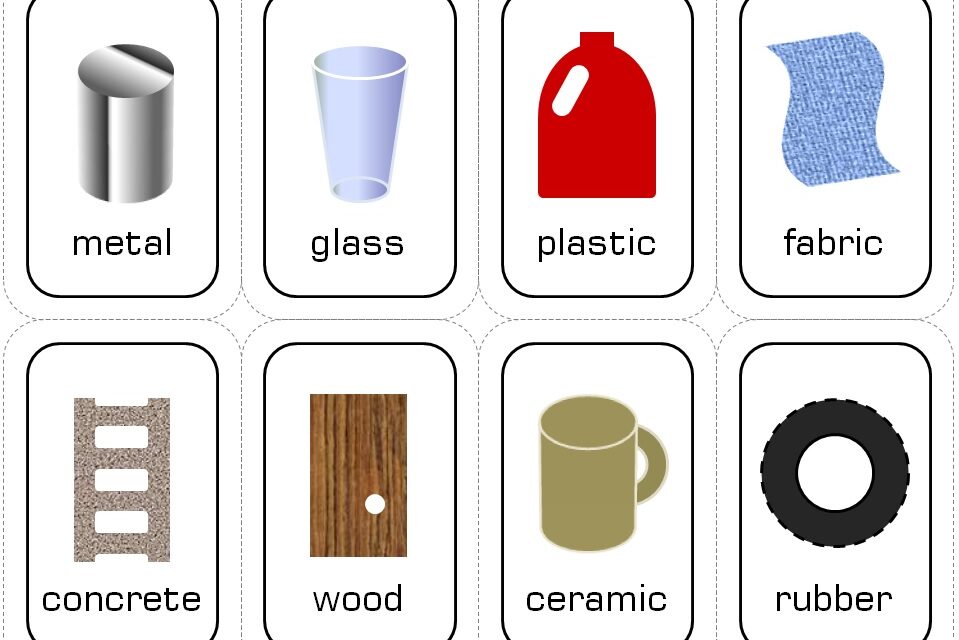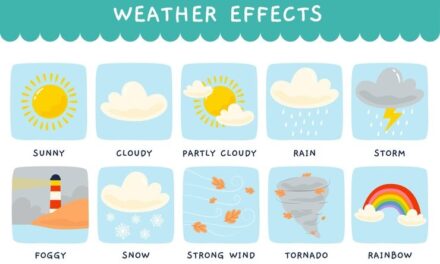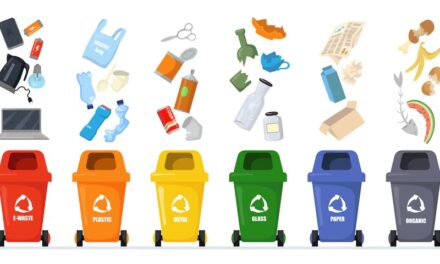In this chapter, we will learn about different kinds of metals and materials, where they come from, and how they are used in our daily lives. Let’s dive into the fascinating world of metals and materials!
Sources of Metals and Materials
Materials are substances that we use to make everything around us, from our clothes to our homes and toys. They come from various sources, including the Earth, plants, and animals. We also create new materials through human ingenuity. Let’s explore these sources in detail.
Metals from the Earth
Metals are naturally occurring elements found in the Earth’s crust. They are strong, durable, and used in many things we use every day. Metals are mined from the ground and then processed to be used in various products.
– Iron: Iron is used to make steel, which is used in buildings, cars, and machinery. It is found in iron ore.
– Aluminum: Aluminum is lightweight and used in cans, foil, and airplanes. It comes from bauxite ore.
– Copper: Copper is used in electrical wires and plumbing. It is mined from copper ore.
How Metals are Mined:
- Exploration: Finding where metals are located.
- Mining: Extracting the metal ore from the Earth.
- Processing: Refining the ore to get pure metal.
- Manufacturing: Using the metal to make products.
Materials from Plants and Animals
Plants and animals provide us with many materials that are essential in our daily lives. These materials are natural and have been used for thousands of years.
– Timber: Timber is wood from trees and is used for building houses, furniture, and paper. Timber comes from forests where trees are harvested and processed.
– Rubber: Rubber comes from the sap of the rubber tree and is used in tires, shoes, and various household items. The sap is collected and processed into rubber products.
– Paper: Paper is made from wood fibers from trees. The fibers are pulped, pressed, and dried to make paper. It is used for books, newspapers, and packaging.
– Fibre: Fibres from plants like cotton and flax are used to make clothing and textiles. Cotton comes from the cotton plant, and flax provides linen.
How Plant Materials are Processed:
- Harvesting: Collecting materials from plants or trees.
- Processing: Preparing the materials, like pulping wood for paper or spinning cotton into yarn.
- Manufacturing: Making products from the processed materials.
Materials from Animals
Animals provide materials like leather, silk, and wool that have been used by people for clothing and other purposes.
– Leather: Leather comes from animal hides, usually cows. The hides are tanned to make them soft and durable. Leather is used for shoes, bags, and furniture.
– Silk: Silk is produced by silkworms. The silkworms spin cocoons, which are harvested and processed into silk fabric. Silk is known for its softness and shine.
– Wool: Wool comes from sheep. The wool is sheared, cleaned, and spun into yarn. Wool is used to make warm clothing like sweaters and blankets.
How Animal Materials are Processed:
- Harvesting: Collecting wool, hides, or cocoons.
- Processing: Cleaning and preparing the materials, like tanning leather or spinning wool.
- Manufacturing: Creating products from the processed materials.
Man-Made Materials
Humans have invented many materials that do not occur naturally. These materials are often made from natural resources but have been modified or combined to create something new. Let’s look at some common man-made materials.
Plastic
Plastic is a versatile material made from chemicals derived from oil and natural gas. It is used in countless products, from bottles to toys.
– Types of Plastic:
– Polyethylene: Used in plastic bags and bottles.
– Polypropylene: Used in containers and automotive parts.
– Polyvinyl Chloride (PVC): Used in pipes and flooring.
How Plastic is Made:
- Polymerization: Combining small molecules called monomers into long chains to form plastic.
- Processing: Shaping the plastic into products using methods like extrusion or molding.
- Manufacturing: Creating products from the processed plastic.
Synthetic Rope
Synthetic rope is made from artificial fibers rather than natural ones. It is used in various applications, such as climbing, towing, and construction.
– Types of Synthetic Rope:
– Nylon Rope: Strong and stretchy, used in climbing and rescue operations.
– Polypropylene Rope: Lightweight and resistant to water, used in boating and construction.
– Polyester Rope: Durable and resistant to UV light, used in outdoor applications.
How Synthetic Rope is Made:
- Fiber Production: Creating fibers from chemicals or polymers.
- Spinning: Twisting the fibers together to form rope.
- Manufacturing: Using the rope in various applications.
Properties of Materials
Different materials have different properties that make them suitable for various uses. Let’s explore some important properties of materials.
– Strength: The ability of a material to withstand forces without breaking. Metals like steel are strong and used in construction.
– Flexibility: The ability of a material to bend without breaking. Rubber is flexible and used in tires and seals.
– Durability: The ability of a material to last over time without wearing out. Leather is durable and used in shoes and bags.
– Insulation: The ability of a material to prevent the passage of heat, sound, or electricity. Wool is a good insulator and keeps us warm.
– Transparency: The ability of a material to let light pass through. Glass is transparent and used in windows.
Importance of Materials
Materials play a crucial role in our everyday lives. They help us build, create, and live comfortably. Here’s why materials are important:
– Building and Construction: Metals, timber, and concrete are used to build houses, bridges, and roads.
– Clothing and Textiles: Fibres like cotton, wool, and silk are used to make clothes and fabrics.
– Transportation: Materials like steel and rubber are used to make cars, bikes, and airplanes.
– Technology: Materials like plastics and metals are essential for making electronic devices and machinery.
Conserving Materials
Using materials wisely and conserving them is important for protecting the environment. Here are some ways to conserve materials:
– Reduce: Use fewer materials by minimizing waste. For example, use reusable bags instead of plastic ones.
– Reuse: Find new uses for old items. For example, use glass jars for storage.
– Recycle: Recycle materials like paper, plastic, and metal to make new products.
– Repair: Fix broken items instead of throwing them away. For example, repair a torn shirt instead of buying a new one.
The worksheet covers the following topics-
Sources of metals and materials
Metals from the earth
Materials from plants and animals
Timber, Rubber, Paper, Fibre
Leather, silk, wool
Man-made materials
Plastic, synthetic rope,

















